



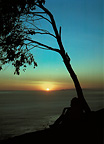







The Friedman Archives Newsletter
April 2009
In this issue:




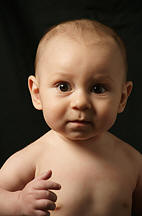
Pocket Wizards and Radio Poppers
Many people write to me and ask how they can utilize Pocket Wizards
(the working professional's choice for radio triggering of flashes)
with the Sony cameras and flashes. Most of those who ask don't
realize that the original Pocket Wizard was designed to trigger
studio strobes, and so when you hook them up as described below you
lose all the benefits of automatic (TTL) flash exposure - you have
to manually tell your flash how much light to output.
To make Pocket Wizards work with the Sony flashes, you need to
convert the hot shoe on top of your camera to a "standard" hot
shoe. For this you can either use the Sony FA-HS1AM or the "Hot
Shoe Adapter III" from Gadget Infinity. You'll also need
a special cable to attach the Pocket Wizard receiver to the
off-camera flash, such as this one: http://www.flashzebra.com/products/0119/index.shtml
.
 If you're
looking for the reliability of radio triggering but don't want to
give up automatic TTL flash exposure, I highly recommend the best
of both worlds: They're called Radio Poppers (www.radiopopper.com), and they way
they work is just brilliant. The transmitter is actually a very
tiny device which you stick onto your controller flash. Every time
the flash goes off (even if it's to send the Morse-code-like
control signals), an induction coil in the Radio Popper transmitter
senses the rush of electrons through the flash's light tube and
therefore "knows" exactly what the flash is doing, and sends out
the identical signals via radio waves. The receiver, which gets
mounted to an off-camera wireless flash, "hears" the radio
frequency signals and translates them into corresponding pulses
infrared light, feeding them to the flash's IR sensor. Thus, you
have the best of both worlds: completely automated TTL flash
exposure and the reliability of radio (which requires no
line-of-sight and doesn't get washed out in bright daylight).
Voila!
If you're
looking for the reliability of radio triggering but don't want to
give up automatic TTL flash exposure, I highly recommend the best
of both worlds: They're called Radio Poppers (www.radiopopper.com), and they way
they work is just brilliant. The transmitter is actually a very
tiny device which you stick onto your controller flash. Every time
the flash goes off (even if it's to send the Morse-code-like
control signals), an induction coil in the Radio Popper transmitter
senses the rush of electrons through the flash's light tube and
therefore "knows" exactly what the flash is doing, and sends out
the identical signals via radio waves. The receiver, which gets
mounted to an off-camera wireless flash, "hears" the radio
frequency signals and translates them into corresponding pulses
infrared light, feeding them to the flash's IR sensor. Thus, you
have the best of both worlds: completely automated TTL flash
exposure and the reliability of radio (which requires no
line-of-sight and doesn't get washed out in bright daylight).
Voila!
Update: When I wrote the above
paragraph, it was right before the company introduced their new PX
line of equipment. It was also about the same time that the
company started to admit an unexpected technical problem: Their
sampling rate wasn't compatible with all brands of wireless flash
protocols. Very quietly they slipped into their documentation
that their products were only certified for Canon and Nikon
cameras, with certification for others "coming soon". This
limitation seemed strange to me, but I was never able to get in
touch with a technical person to understand this limitation
better. Word on the street has it that these work just fine
with the Sony system. I'll let you know what I find when my
evaluation units arrive. :-)
The Importance of Fill-Flash
This is probably old-hat to most of you, but when it comes to
situations where the camera sees the subject very differently from
your eye, I find that you can never hammer this point home often
enough: Fill Flash Matters!
Have a look at these two images of my new favorite test subject :
See how dark the baby's face is under the eyes in the left
shot? It sure didn't look that dark to me when I was standing
there! That's one of the biggest problems with photography - the
film or digital sensor can't see nearly as wide a range of light as
the human eye can. That's why in outdoor scenes, it's important to
ensure that what's in shadow doesn't render as depressingly
dark. Lighten your shadows by turning your camera's flash ON
(as in the right image). When the light is strong, the camera's
flash will do its best to lighten the shadows so they look more
like the way we remember seeing them - all automatically.
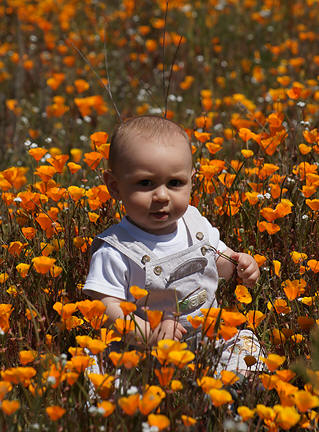

Once you understand how the camera reacts so differently to
light, you can never again look at Hollywood images of people
wearing hats and not think to yourself, "They must have used a
giant mirror outside the frame to fill in those shadows and make
the faces visible!" (Which in fact they did all the time when
filming "Little House on the Prairie" - have a look at the youtube
clip below, and watch how the lighting on Michael Landon's face
gets brighter as he pulls into the spot where the fill light is
waiting).
Next Seminars - Nashville and New York
Two more Friedman Archives High-Impact Photography Seminars are in
the works, one for Nashville and one for New York City. The
tentative dates are as follows:
Nashville - Sept. 12-13, 2009
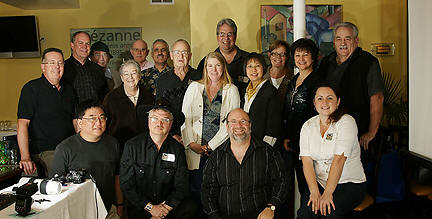
Southern California Seminar Attendees |
We're still looking for meeting space that doesn't cost an arm
and a leg (or a Zeiss lens), but at least you can put these dates
on your calendar so you can attend these events.
The Friedman Archives Seminars have amassed a reputation for being
a fun and approachable way to get your creativity going and to
learn the basics of photography in an intuitive way. And, based on
attendee feedback, the seminars are being improved by incorporating
more in-class exercises and feedback sessions to reinforce the
learning experience even more.
You can register your interest in attending (before the official
signup forms go online) by clicking on the dates above. Want the
seminars to come to your city? Send an email expressing interest to
seminars@FriedmanArchives.com .
We've had to put off all plans for international travel until 2010,
at which time we definitely plan to schedule seminars for Amsterdam
and Copenhagen (possibly the UK as well).
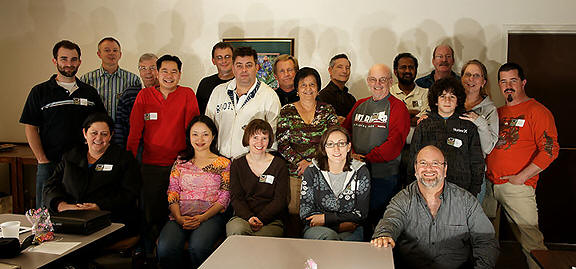
Northern California Seminar Attendees
(These group shots, by the way, were taken using multiple wireless flashes. Everyone who owned a wireless flash was invited to set it up on a table and point it toward the group. Keep in mind that in situations like this where you have multiple flashes all acting as one group, they will all fire with the same level of output -- the camera bases its flash exposure calculation on the one flash which produced the brightest reflection from the subject. Hence the apparent splotchiness of lighting, plus the multiple shadows in the background. In the future I'll try to have everyone place their flashes the same distance from the subject they're trying to illuminate. Earlier I had tried to have everyone pointing their flashes to the ceiling for a humongous bounce flash effect, but the harsh shadows on the faces under the eyes make it look like we were outdoors on a bright, sunny day at noon.)
A900 book is finally out!
Well, it took six months, but my largest book to date, on the
24-megapixel Sony Alpha 900, is finally out and available in both
electronic and printed versions here. This book was particularly
challenging because I knew a large percentage of those buying the
book would be repeat customers who probably didn't need a primer on
the basics of photography, and so I completely reorganized the book
to be a reference book that skipped the basic stuff and
concentrated, in greater detail than usual, on every feature and
setting, giving as much insights as possible. In short, I wanted it
to be the opposite of the manual that came with the camera.
My! I do not mean to rag on Sony for producing a 'poor' manual. In
my experience, ALL manufacturers of consumer electronics devices
have learned over the years that people simply don't have the time
to read large instruction manuals, and so they go out of their way
to convey the operation of the device using as few words as
possible. (Believe me, that's much harder than taking the time to
explain everything, including the history behind a setting and
circumstances in which it would be beneficial.) Then these
minimalist works get translated into other languages, and that's
where any clarity issues start to take form. So I understand why
the manuals end up the way they do. And I certainly don't mind,
since it creates a market niche which I enjoy fulfilling very
much!
Chasing the Fine Nines
The holy grail in terms of computer server availability (and communications infrastructure in general) is the coveted "Five Nines" - that is, 99.999% uptime. This translates to about 5 minutes of downtime per year as being acceptable.
Last month was not a good month for the Friedman Archives website in terms of the five nines. First, the site was infected with some malware which tried to do evil things to computers that visited the site. Soon after that was resolved, the entire site was down for almost 24 hours because my domain name (which had automatic renewal enabled) mysteriously expired without any notification or explanation. (I found out only by accident!) After working frantically to get things restored (involving other technical problems I don't care to get into), the site was restored but with a different kind of malware affecting it. A day later that, too, was resolved. Then my webhost experienced a network outage lasting about 8 hours. In all, I blew the 5 nines goal for the year by a factor of 600 in less than a week!
Here's the interesting part: The expired domain occurred on my redirect server. This is a server I had set up so I could redirect all web traffic to a backup server on a moment's notice should my primary server, well, experience a network outage lasting about 8 hours or so. :-) So in my efforts to create some redundancy in my infrastructure to avoid disaster, I inadvertently introduced a new source of failure. As the systems engineers say, "It's always something!"
Try an A900 on for size...
Many of you who are perfectly happy with the digital camera you
already have may have been fantasizing about investing in an Alpha
900 camera, just because - well, just because. Let me tell you now
that, unless you're doing commercial work which must be blown up to
giant proportions, this camera may very well be overkill for
you. The file sizes are huge, your computer will appear to
work slower doing your normal post-processing, and you'll
eventually need to upgrade all of your hard drives to accommodate
all the extra space.
But if you're still thinking about it, you can build
your own paper model of an A900 and hold it in your hands.
:-)
By the way, in my quest to find a lightweight traveling lens for my
A900, I dug through my Minolta collection and found an original
Maxxum 35-70 f/4 zoom lens, one of a trio of legendarily cheap and
sharp lenses which Minolta had originally designed for Leica. It
has its disadvantages - minimum focusing distance is about 1 meter
(although there is a macro mode), and it's not quite as wide nor
does it let in as much light - but if you need a
superbly-performing walk-around lens that doesn't weigh you down
like the expensive Zeiss 24-70 f/2.8, put this short lens on your
short list.
Until next time...
Yours Truly,
Gary Friedman
Subscribe to this Newsletter Next Newsletter - May, 2009
Previous Newsletter - January, 2009 Newsletters Main Page
Back to the Friedman Archives Home page